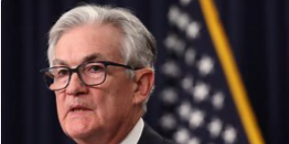Federal Reserve Schedules Closed-Door Meeting: Is an Emergency Rate Move on the Horizon?”
The Federal Reserve has abruptly scheduled a closed-door emergency meeting for April 7, sparking intense speculation across financial markets. With no public agenda released, investors are scrambling to decode the Fed’s intentions: Is this a routine check-in, or a sign of looming policy upheaval? The timing is critical—coming just days after historic market turmoil tied to trade war fears and a global growth slowdown. Here’s what we know, what it could mean, and how to prepare.
1. The Meeting: Key Details
- Date: April 7, 2024 (unscheduled, per the Fed’s “expedited procedures”).
- Format: Closed to the public, with no press conference or statement expected immediately afterward.
- Context: Follows March’s “hold” on rates and amid escalating market stress (Dow’s 2,200-point plunge, bond yield volatility, and a surging dollar).
2. Why the Secrecy? Decoding Fed Emergency Protocols
Closed-door Fed meetings are rare but not unprecedented. Under Regulation 12 CFR 261b.5, the Fed can convene privately to discuss “unusual and exigent circumstances,” such as:
- Market dysfunction (e.g., liquidity crunches, Treasury market stress).
- Emergency rate changes (like the 2020 pandemic-era cuts).
- Global systemic risks (banking crises, currency collapses).
Historical Precedent:
- March 2020: Emergency 50 bps rate cut days before a scheduled meeting.
- October 2008: Closed meetings before announcing TARP and QE1.
3. Why Now? The Economic Powder Keg
The Fed’s urgency likely ties to mounting risks:
- Market Meltdowns: Stocks and bonds are whipsawing on trade war fears and inflation uncertainty.
- Banking Sector Jitters: Regional bank stocks (e.g., NYCB) are down 20% YTD on commercial real estate defaults.
- Dollar Dominance: The USD’s surge threatens emerging markets and U.S. export competitiveness.
- Policy Dilemma: Sticky inflation (CPI at 3.8%) clashes with softening jobs data (unemployment up to 4.1%).
4. What Could the Fed Be Planning?
Scenario 1: Emergency Rate Cut
- Probability: Moderate. Markets now price in a 35% chance of a May cut (up from 15% last week).
- Rationale: Prevent a deeper equity sell-off and ease borrowing costs for stressed consumers/businesses.
Scenario 2: Accelerating QT Taper
- Likelihood: High. The Fed has already slowed balance sheet runoff; halting QT entirely could calm bond markets.
Scenario 3: Liquidity Lifelines
- Possibility: Reviving pandemic-era facilities (e.g., repo operations, swap lines) to stabilize funding markets.
Scenario 4: Jawboning, Not Action
- Wildcard: The meeting could simply prep Fed officials for messaging shifts at the May 1 FOMC meeting.
5. Market Reactions: Preparing for Volatility
- Stocks: A surprise rate cut could trigger a short-term rally (especially in rate-sensitive tech and housing).
- Bonds: Yields may drop further, flattening the curve if recession fears mount.
- Dollar: A dovish Fed would weaken the USD, offering relief to emerging markets and commodities.
- Gold: Likely to test new highs ($2,500/oz?) as a hedge against policy chaos.
6. Skeptics Push Back: “Don’t Panic Yet”
Some analysts argue the Fed is merely stress-testing contingency plans:
- “Proactive, Not Reactive”: The Fed may be modeling extreme scenarios (e.g., China trade collapse, oil shock) without imminent action.
- Political Pressure: With elections looming, the Fed risks appearing politicized if it intervenes prematurely.
7. What Investors Should Do Now
- Stay Liquid: Ensure cash reserves to weather volatility or seize opportunities.
- Hedge Bets: Allocate to defensive sectors (utilities, healthcare) and gold.
- Watch the Data: Key reports before April 7: March jobs data (April 5) and ISM Services PMI (April 3).
- Monitor Fed Speakers: Any leaks from regional Fed presidents could hint at the agenda.
Bottom Line
While the Fed’s closed-door meeting could signal an emergency move, knee-jerk reactions are risky. Historically, such meetings often precede major policy shifts—but not always. Investors should brace for headline-driven swings while focusing on long-term fundamentals.
One thing is clear: The Fed is on high alert. Whether it acts now or later, the message is unmistakable—the global economy is walking a tightrope.
